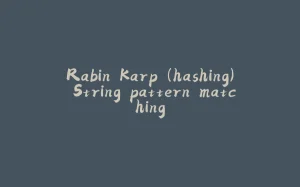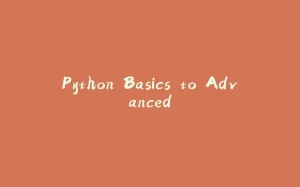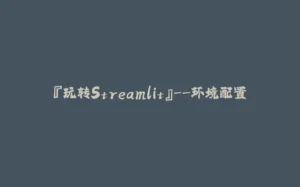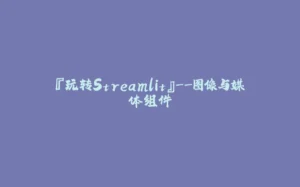Object oriented programming system(oops):
–>Python is a multi-paradigm language.
–>In Python object-oriented Programming (OOPs) is a programming paradigm that uses objects and classes in programming.
Class
–>Template or blueprint of an idea(Logical entity).
–>Class is collection of objects.
Example: Bike
object
–>Object is a physical or real-time or real world entity.
–> It contains states(attributes) and behaviour(methods).
–> Object is representation/instance of class.
Example: Activa,pulsar
Note:we cannot create object without class.But class can be present without objects.
Example for state & behaviour-Bike
- State–> brand, color, and speed
- Behaviour–> start, accelerate, and stop
Why we use oops in python?
- Code Reusability
- Scalability and Maintainability
from PIL import Imagephoto = Image.open("abcd.jpeg")photo.show()from PIL import Image photo = Image.open("abcd.jpeg") photo.show()from PIL import Image photo = Image.open("abcd.jpeg") photo.show()
Enter fullscreen mode Exit fullscreen mode
Output:
CSV-Matplotlib:
CSV File:
–>Comma seperated value files.
–>It is a plain text format with series of values seperated by commas.
–>It stores all lines and fields in rows and columns
–>It can be opened with any text editor in windows.
Matplotlib:
Matplotlib is a popular data visualization library in Python that allows users to create static, animated, and interactive plots.
Example:
import matplotlib.pyplot as pltimport csvyears = []sales = []with open("sales.csv","r") as f:reader = csv.reader(f)next(reader)for each_row in reader:years.append(int(each_row[0]))sales.append(int(each_row[1]))print(years)print(sales)plt.figure(figsize =(7,5))plt.plot(years, sales, color="r", label=("Yearly Sales"))plt.xlabel('Years')plt.ylabel("Sales")plt.title("Last 5 Years Sales ")plt.show()import matplotlib.pyplot as plt import csv years = [] sales = [] with open("sales.csv","r") as f: reader = csv.reader(f) next(reader) for each_row in reader: years.append(int(each_row[0])) sales.append(int(each_row[1])) print(years) print(sales) plt.figure(figsize =(7,5)) plt.plot(years, sales, color="r", label=("Yearly Sales")) plt.xlabel('Years') plt.ylabel("Sales") plt.title("Last 5 Years Sales ") plt.show()import matplotlib.pyplot as plt import csv years = [] sales = [] with open("sales.csv","r") as f: reader = csv.reader(f) next(reader) for each_row in reader: years.append(int(each_row[0])) sales.append(int(each_row[1])) print(years) print(sales) plt.figure(figsize =(7,5)) plt.plot(years, sales, color="r", label=("Yearly Sales")) plt.xlabel('Years') plt.ylabel("Sales") plt.title("Last 5 Years Sales ") plt.show()
Enter fullscreen mode Exit fullscreen mode
Output:
[2020, 2021, 2022, 2023, 2024][10000, 8000, 9500, 10500, 12000][2020, 2021, 2022, 2023, 2024] [10000, 8000, 9500, 10500, 12000][2020, 2021, 2022, 2023, 2024] [10000, 8000, 9500, 10500, 12000]
Enter fullscreen mode Exit fullscreen mode
Modes to open csv files:
–> ‘r’ – to read an existing file,
–> ‘w’ – to create a new file if the given file doesn’t exist and write to it,
–> ‘a’ – to append to existing file content,
–> ‘+’ – to create a new file for reading and writing
Exercises:
1.
f = open("abcd.txt","w")print(type(f))print(f.name)print(f.mode)print(f.readable())print(f.writable())print(f.closed)f = open("abcd.txt","w") print(type(f)) print(f.name) print(f.mode) print(f.readable()) print(f.writable()) print(f.closed)f = open("abcd.txt","w") print(type(f)) print(f.name) print(f.mode) print(f.readable()) print(f.writable()) print(f.closed)
Enter fullscreen mode Exit fullscreen mode
Output:
<class '_io.TextIOWrapper'>abcd.txtwFalseTrueFalse<class '_io.TextIOWrapper'> abcd.txt w False True False<class '_io.TextIOWrapper'> abcd.txt w False True False
Enter fullscreen mode Exit fullscreen mode
2.
f = open("abcd.txt","w")f.write("Friday")f.write("Saturday")f.close()f = open("abcd.txt","w") f.write("Friday") f.write("Saturday") f.close()f = open("abcd.txt","w") f.write("Friday") f.write("Saturday") f.close()
Enter fullscreen mode Exit fullscreen mode
Output:
FridaySaturdayFridaySaturdayFridaySaturday
Enter fullscreen mode Exit fullscreen mode
3.
f = open("abcd.txt","w")f.write("Friday")f.write("Saturday")f.close()f = open("abcd.txt","w") f.write("Friday") f.write("Saturday") f.close()f = open("abcd.txt","w") f.write("Friday") f.write("Saturday") f.close()
Enter fullscreen mode Exit fullscreen mode
Output:
sundaymondaysundaymondaysundaymonday
Enter fullscreen mode Exit fullscreen mode
In write mode(w) if file already exist then text will be replaced with newly entered text.
4.
f = open("abcd.txt","a")f.write("tuesday")f.write("wednesday")f.close()f = open("abcd.txt","a") f.write("tuesday") f.write("wednesday") f.close()f = open("abcd.txt","a") f.write("tuesday") f.write("wednesday") f.close()
Enter fullscreen mode Exit fullscreen mode
Output:
sundaymondaytuesdaywednesday
In append mode(a) if file already exist then text will be added to the last of existing text.
The close() method is used to close an open file in Python. Closing a file is important because it:
- Frees up system resources
- Ensures all data is written (for writing files)
- Prevents errors from accessing a closed file
5.
f = open("abcd.txt","r")data = f.read()print(data)f.close()f = open("abcd.txt","r") data = f.read() print(data) f.close()f = open("abcd.txt","r") data = f.read() print(data) f.close()
Enter fullscreen mode Exit fullscreen mode
Output:
sundaymondaytuesdaywednesdayjanfebmar
6.
f = open("abcd.txt","r")data = f.read(5)print(data)f.close()f = open("abcd.txt","r") data = f.read(5) print(data) f.close()f = open("abcd.txt","r") data = f.read(5) print(data) f.close()
Enter fullscreen mode Exit fullscreen mode
Output:
sunda
7.
f = open("abcd.txt","r")data = f.readline()print(data)f.close()f = open("abcd.txt","r") data = f.readline() print(data) f.close()f = open("abcd.txt","r") data = f.readline() print(data) f.close()
Enter fullscreen mode Exit fullscreen mode
Output:
sundaymondaytuesdaywednesdayjanfebmar
readline() method is used to read a single line from a file.
8.
f = open("abcd.txt","r")data = f.readlines()for every_line in data:print(every_line, end='')f.close()f = open("abcd.txt","r") data = f.readlines() for every_line in data: print(every_line, end='') f.close()f = open("abcd.txt","r") data = f.readlines() for every_line in data: print(every_line, end='') f.close()
Enter fullscreen mode Exit fullscreen mode
Output:
ThursdayFridaySaturdayThursday Friday SaturdayThursday Friday Saturday
Enter fullscreen mode Exit fullscreen mode
–> The readlines() method is used to read all lines from a file and return them as a list of strings.
–> Each line in the file becomes an item in the list.
9) Find no.of.lines, no.of words and no.of letters in text file:
SundayMondayTuesdayWednesdayjanfebmarguruprasannalakshmiprithaSundayMondayTuesdayWednesdayjanfebmar guru prasanna lakshmi prithaSundayMondayTuesdayWednesdayjanfebmar guru prasanna lakshmi pritha
Enter fullscreen mode Exit fullscreen mode
f = open("abcd.txt","r")data = f.readlines()no_of_words = 0no_of_letters = 0for every_line in data:no_of_lines = len(data)words = every_line.split()no_of_words += len(words)for letter in words:no_of_letters+= len(letter)f.close()print("Number of Lines:", no_of_lines)print("Number of Words:", no_of_words)print("Number of Letters:", no_of_letters)f = open("abcd.txt","r") data = f.readlines() no_of_words = 0 no_of_letters = 0 for every_line in data: no_of_lines = len(data) words = every_line.split() no_of_words += len(words) for letter in words: no_of_letters+= len(letter) f.close() print("Number of Lines:", no_of_lines) print("Number of Words:", no_of_words) print("Number of Letters:", no_of_letters)f = open("abcd.txt","r") data = f.readlines() no_of_words = 0 no_of_letters = 0 for every_line in data: no_of_lines = len(data) words = every_line.split() no_of_words += len(words) for letter in words: no_of_letters+= len(letter) f.close() print("Number of Lines:", no_of_lines) print("Number of Words:", no_of_words) print("Number of Letters:", no_of_letters)
Enter fullscreen mode Exit fullscreen mode
Output:
Number of Lines: 5Number of Words: 5Number of Letters: 62Number of Lines: 5 Number of Words: 5 Number of Letters: 62Number of Lines: 5 Number of Words: 5 Number of Letters: 62
Enter fullscreen mode Exit fullscreen mode
10) To find whether file is available in the given location or not:
import osfile_name = input("Enter file Name: ")if os.path.isfile(file_name):print("File is present")f = open(file_name, "r")else:print("File is not present")import os file_name = input("Enter file Name: ") if os.path.isfile(file_name): print("File is present") f = open(file_name, "r") else: print("File is not present")import os file_name = input("Enter file Name: ") if os.path.isfile(file_name): print("File is present") f = open(file_name, "r") else: print("File is not present")
Enter fullscreen mode Exit fullscreen mode
Output:
Enter file Name: user.pyFile is presentEnter file Name: user.py File is presentEnter file Name: user.py File is present
Enter fullscreen mode Exit fullscreen mode
原文链接:Python Day-32 Object oriented programming(oops), CSV, Matplotlib





























暂无评论内容